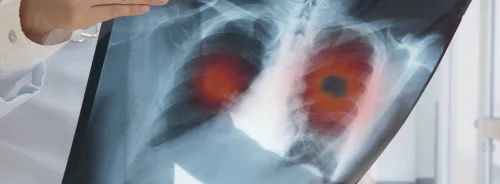Author:
Department of Anaesthesiology and Intensive Care Medicine
University Hospital Schleswig-Holstein
Hospital risk management includes human factors and technical hazards as well as leadership, procedural, educational,
financial and organisational issues. The World Health Organisation’s Surgical Safety Checklist is a multifunctional risk
management tool related to all these fields. The checklist reduces perioperative morbidity and mortality. However, its
effectiveness depends on correct implementation and performance. Not only checking of important items, but also
communication, teambuilding, leadership, education and organisation are important.
Useful Links
- How to
do the WHO safe surgery checklist [video]. ?v=CsNpfMldtyk
www.youtube.com/watch
- How not
to do the WHO safe surger y check l ist [video] www.youtube.com/watch?
v=REyers2AAeI&feature=related
- WHO
surgical safety checklist and implementation manual
-
How to do the WHO safe surgery
checklist [video]. /watch?v=CsNpfMldtyk
http://www.who.int/patientsafety/safesurgery/ss_checklist/en/index.html
www.youtube.com
- How not
to do the WHO safe surgery checklist [video] www.youtube.com/watch?v=REyers2AAeI&
feature=related
The Surgical Safety Checklist
The WHO Surgical Safety Checklist is a checklist designed to reduce perioperative mortality and morbidity by avoiding errors and complications of surgery and anaesthesia. It consists of three parts, each containing roughly ten items concerning identity of patient and team members, anaesthetic and surgical procedures, pre-existing diseases, equipment and postoperative recommendations. These items have to be checked and communicated orally to all participating team members at three points in time during the procedure.
The first point is immediately before induction of anaesthesia (Sign In), the second immediately before incision (Time Out) and the third (Sign Out) immediately after suture. At these points in time the activity of all team members has to be interrupted to ensure that everybody is participating in communication.
The WHO checklist can be downloaded from the WHO website together with a guideline for implementation. Both correct and incorrect practical application of the WHO checklist are demonstrated on videos accessible via YouTube.
The effectiveness of the WHO checklist on morbidity and mortality was first shown by Haynes et al. in 2008. These results lead to a worldwide recommendation to use the checklist during all surgical procedures issued by the WHO and a number of studies confirming its effect on outcome and safety culture. These studies have been reviewed recently. This article focuses on the general principles of risk management involved in correct application of the WHO checklist and their impact on implementation.
A Multifunctional Risk Management Tool
Risk management must take into account human factors, communication, equipment and processes as well as leadership, procedural, organisational, financial, and educational issues. Implementation and use of the WHO checklist is related to all these fields (Figure. 1). Human factors have been recognised as primary sources of complications and critical incidences in medicine as well as in other critical environments in industry and transportation. Lack of knowledge and skills, errors, mistakes and mishaps are causes of false actions and thoughts resulting in adverse events. These individual errors can be reduced by checking important issues using the WHO checklist.
In addition to individual human errors, communication problems have been identified as a major cause of complications in medicine. Bad communication habits increase the risk of complications due to loss of important information. Hence, understanding and using the WHO checklist as a communication tool is essential for its effectiveness. This aspect is not always easy to realise in practice. Speaking up and repeating all important aspects loud and clearly to all team members is unfamiliar to many operating room staff members and sometimes regarded as redundant and too time consuming. Using the checklist is often reduced to ticking all the boxes by one team member without communicating with others. Therefore training and supervising the application of the checklist in clinical practice are important parts of implementation. This is achieved, if one team member with sufficient authority supervises and corrects errors during the use of the checklist.
Equipment problems and technical hazards are rare in comparison to human failure. However, they are regarded as more avoidable as the latter by defined interventions. Confirming functioning of technical devices and completeness of instruments are parts of the three points in time of the WHO checklist. Procedural standardisation is another important issue. Local written and standardised procedures referring to national or international guidelines are recommended to reduce perioperative risk. The WHO checklist is a standardised protocol and operating theatre workflow is facilitated by the clear communication structure provided.
Leadership style also has a substantial impact on team performance, error rates and patient outcomes. Top-down attitudes combined with misconduct, intimidating or disruptive behaviour negatively affects the mood and well-being of co-workers. Moreover, it increases error rates and impairs patient outcomes in the operating room. Leadership in medicine is widely regarded as a soft skill that cannot be taught or influenced by systematic approaches. However, there is a lot of available literature on leadership and some basic principles can be learned quickly.
Good leaders have an equally high goal and people orientation, thus keeping a balance between the requirement of achieving a task and good interpersonal relationships. They prefer a flat hierarchy with short lines of communication. Performing the WHO checklist systematically enforces good leadership habits like contacting and informing all team members about what is planned and what background information is needed as well as providing time for remarks and questions without disturbing the procedure.
Intentionally including all team members in information exchange regarding the upcoming common task during Sign In and Time Out enforces teambuilding, thus improving motivation and performance. Sign Out functions not only as an information exchange about the completed procedure and postoperative orders, but also provides an opportunity for a short team debriefing including critical incident reporting, if needed. In complicated cases this is an opportunity to arrange a postoperative meeting to debrief the case systematically. The item “Criticism or suggestions for improvement” can be added to the WHO checklist to provide an opportunity to communicate remarks about problems during the case without interfering at an inappropriate point in time during surgery.
Risk management is connected with financial management, since from the financial point of view cost effectiveness of risk reducing procedures has to be proven to justify the expenses. However, cost-cutting has been regarded as a threat to risk management. It leads to potentially dangerous production pressure with the requirement to treat more patients in less time with less personnel. The WHO checklist has repeatedly been criticised for being too time consuming and therefore costly, albeit its positive effect on outcome has been shown by several studies and the expenditure of time is relatively low (less than two minutes per surgical procedure). Moreover, a recent study has shown that the spending saved by avoiding complications probably exceeds the costs of implementation and performing the WHO checklist in most hospitals.
Improving education of personnel with special emphasis on safety topics and human factors is a further means to reduce the risk of perioperative complications. Education is improved by using the Sign In, Time Out and Sign Out to explain the surgical and anaesthesiological procedure and postoperative recommendations to all team members. In university hospitals there is nearly always at least one medical or nursing student in the operating theatre who does not have all the information that is needed to understand the surgical and anaesthesiological approach.
Implementation of the WHO checklist needs to be organised systematically to guarantee successful adoption. It is not sufficient to release a copy of the original WHO checklist and simply order its use without thorough preparation, information, training and supervision of its application. First, it has to be checked, whether the original WHO checklist is applicable to the hospital without changes of language and content. After translation, the contents have to be adopted to include important features that are not part of the original WHO checklist or omit items that are not applicable for the hospital. For example, checking for massive blood loss is not important in ophthalmology and can therefore be omitted in a hospital specialised in eye surgery. Otherwise, it has to be avoided to include too many additional items, since overloading the list renders its application more time consuming and reduces its acceptance.
An adopted checklist does not need to include the WHO logo but it must contain the reference: 'Based on the WHO Surgical Safety Checklist, URL, http://www.who.int/patientsafety/safesurgery/en, © World Health Organization 2008 All rights reserved.'. The adopted WHO checklist has to be sent to the WHO to authorise its use. The checklist can be adapted by reducing the questions to key words and omitting the tick boxes to reduce reading time and to focus more on the correct performance than on ticking the boxes. A detailed, but short handout should be written to inform all staff members about the procedure. However, in practice most staff members have to be informed by oral instruction either personally in the operating theatre or by lectures on the WHO checklist of about 45 minutes preferably including videos demonstrating the correct application. It is important to arrange enough time for discussions during the lectures. The WHO checklist should be first implemented in one operating theatre for some weeks to demonstrate its practicability..
Implementation of the WHO checklist should be accompanied by other measures of risk management concepts including other perioperative checklists (e.g. for preparation on the ward or handover in the recovery room), the ABCDE-system for critical incident management and systematic communication, a critical incident reporting system (CIRS) and safety rounds.
The Checklist Concept Outside the Operating Theatre
The WHO checklist concept of interrupting workflow for effective communication can also be integrated into team procedures outside the operating theatre. Trauma resuscitation room management is an example. A Sign In can be performed before arrival of the patient in the resuscitation room consisting of information exchange about the expected patient and introduction of all team members with name and role. A Time Out 15 minutes after arrival of the patient is an opportunity to exchange gathered information between all team members and determine the next diagnostic and therapeutic procedures. Time Out is repeated after computed tomography, magnetic resonance tomography and/or X-ray imaging for the communication of diagnostic findings. A Sign Out is performed at handover of the patient to the operating theatre or the intensive care unit. At this point each team member delivers a oral and written summary of his or her findings and further recommendations. The concept of systematic briefing is not limited to the operating theatres but can also be applied in other high risk areas of medicine as long as all important issues of risk management are considered.
The WHO checklist is related to human factors and technical hazards as well as leadership, financial, educational, procedural and organisational issues of risk management. Checking, communication and teambuilding are the most important components of risk management using the WHO checklist. Implementation includes detailed team information, training and supervision by checklist coordinators during daily practice to avoid neglect of communication and teambuilding. The concept of systematic briefing is probably also efficient in other fields of medicine as long as all important issues of risk management are considered.





